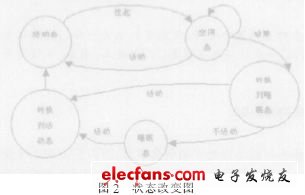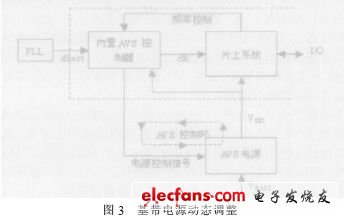introduction
Smartphones contain a lot of energy-consuming devices, such as MP3, MPEG-4, Wi-Fi, digital cameras, 3D games and more. Under the premise that the battery capacity of mobile phones has not yet achieved a qualitative leap, we have to consider the issue of energy saving in mobile phone power supplies. I have mainly explained the following solutions in the following four aspects of the smartphone on the Linux platform.
CPU selection
Although there are various technologies for improving performance without burdening the power consumption, using a chip to handle so many different tasks is probably not a good choice. First, because these functions may have different requirements for chip processing functions. Second, because a chip that bears such a large number of tasks is bound to require high speed, it is difficult to reduce power consumption.
In this case, the multi-CPU system (MPCore) becomes an inevitable trend. One obvious advantage of multi-CPU systems is: Different CPUs can do their job for different task processing needs, and give full play to their advantages, thus bringing the optimal performance of the mobile phone. Another advantage is clearly reflected in the control of power consumption: If a single CPU is used to perform all functions, it inevitably requires a very high CPU speed, resulting in high power consumption. Using a high-speed CPU to accomplish such a task is undoubtedly a big cow pulling a car and wasting a lot of energy. Multi-CPU systems can properly start and stop the corresponding CPU to complete tasks according to different tasks, and are in a state of rest when not needed, to achieve maximum control of power consumption.

Now that we have chosen a multi-CPU architecture, then the performance of the CPU is the second biggest issue we have to consider. In general, we compare and select CPU performance (Power) and power (Power ConsumpTIon). It can usually be measured by the energy consumed per 1M instruction, ie Watt/MIPS.
We divide the power consumption of the CPU into two parts: the core power consumption PCORE and the external interface controller consume power PI/O, and the total power is equal to the sum of the two, namely PPCORE+PI/O. For PCORE, the key is its supply voltage and clock frequency. For PI/O, in addition to paying attention to the power consumption of each dedicated I/O controller, you must also pay attention to the address and data bus width.
In digital integrated circuit design, the static power consumption of CMOS circuits is very low, which is basically negligible compared to its dynamic power consumption. The calculation formula for dynamic power consumption of CMOS circuits is as follows:
Pd=CT*V2*f, where Pd is the dynamic power consumption of the CMOS chip, C is the load capacitance of the CMOS chip, V is the operating voltage of the CMOS chip, and f is the operating frequency of the CMOS chip.
It can be seen from the above that when the CPU is determined, I can reduce the power consumption of the system by reducing the frequency and voltage.
In terms of CPU selection, we recommend Intel's Xscale chip and IBM's PowerPC405G chip.

Dynamic Power Management (DPM)
The system cannot always be at full capacity because the workload of the system is changing at any time. Dynamic Power Management (DPM) optimizes overall system power consumption by selectively placing idle system components in a low-power state.
We are more concerned about the implementation of DPM under the Linux framework. Figure 1 shows the relationship between power management and the embedded Linux stack.
Here are some of the interfaces and APIs related to power management:
Kernel interface. In the DPM architecture for Linux, the DPM subsystem in the kernel is responsible for maintaining the power state of the system and linking the various components of the DPM system that are managed. The DPM subsystem communicates directly with device drivers through multiple APIs that move the driver from a fully operational state to a state where various power supplies are managed. The Policy Manager (or the application itself) provides guidance to the DPM subsystem through multiple APIs that define various policies and transfer the entire system between defined operational points.

Driver interface. DPM-enabled device drivers have more "states" than the default drivers: they are driven by external events through various states, or they are driven by callbacks from the kernel DPM subsystem to reflect and follow operational policies. The driver API also allows drivers to register the basic operational characteristics of the various devices they connect and manage, enabling more granular policy decisions.
Led Corn Light Bulbs are direct replacements for 50W – 500W Mercury Vapour & Metal Halide Lamps. Led Corn Lights are Ideals for street, high bay, post top and droplight fixtures in both indoor and outdoor environments.Corn Bulb is designed to replace old existing SON and Metal Halide type corn Light, which is all being phased out.
Led Corn Light Bulbs
Led Corn Light Bulbs ,Led Corn Lights,Corn Bulb,Corn Light
Shenzhen Bbier Lighting Co., Ltd , https://www.chinabbier.com